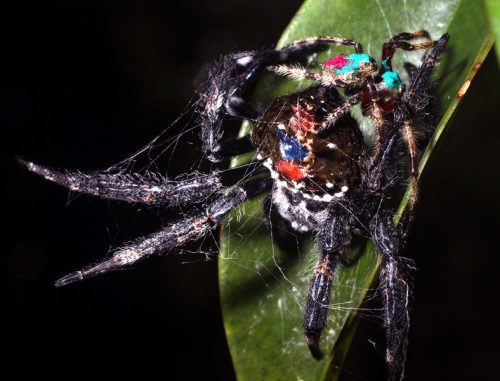It kills me that every time I see a splendid spider photo, I can’t share it here — too many people are freaked out by arachnophobia. I wish I could cure it by constantly rubbing more spiders in your faces, but I know that doesn’t work, so I’ll just gently point you in the direction of a couple of collections of gorgeous spiders, and you can choose to go look, if you want.
The Great Fox Spider has been rediscovered in Britain! These are related to wolf spiders, so you probably know what they look like, but it has the most wonderful mottled markings. I know some people are fans of the more garishly colorful spiders, like peacock jumpers, but I’ve come to appreciate the subtlety of the more variable and muted markings, like the ones I see on Parasteatoda. If you must do something bold, go for something simple and clean, like the distinctive swoosh on Steatoda borealis.
You want more variety? Check out Science Friday’s collection of spider photos. My favorite there is the Pirate Spider — there’s something about a gracile spider with delicate line art on its body and long bristling spikes on its legs that I find appealing. But if you’re into big bearish brute mygalomorphs, get an eyeful of that black purse-web spider with its massive chelicerae.
One more photo I wish I had: yesterday, Mary spotted a tiny juvenile cellar spider descending on a strand of silk, and she brought it to me (I’m desperate to see more live spiders, it’s gotten too cold for them). I tried to catch it by snaring its thread, but it got away fast before I could get my camera ready. We think it landed on my pants. So while I didn’t get a picture, I’ve got that going for me, that maybe a baby spider has taken up residency in my clothing. It’s too bad I’m not going to be able to do laundry, ever.
Man, it’d be easier to be a popular blogger if I had an obsession with cats.





